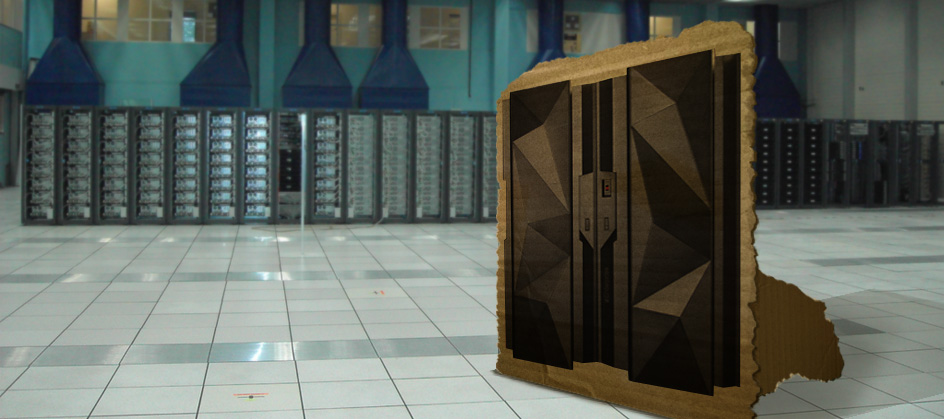With $6 billion in revenue, VMware is heralded as a great success in the enterprise tech sector. However, VMware’s success is a clear indicator of the failure of distributed computing. Here’s why:
Reason #1: A $6 billion band-aid
The first chapter of the sad story of distributed computing is that companies worldwide have had to shell out a whopping $6 billion a year to fix a problem they should never have had in the first place.
The insanely low utilization of commodity servers highlights a fundamental flaw in the logic of distributed computing. That flawed logic revolves around the confusion between capital equipment costs and lifetime TCO. Sure, commodity server hardware is cheap and more easily segregated. So what? It’s also hideously expensive to own, notoriously unreliable, and impossible to secure.
So, of course, you can slightly alleviate one of the many issues that plague distributed computing—low hardware utilization—by throwing $6 billion at it. And, yes, your $6 billion may also buy the ancillary benefit of being able to quickly spin up a new unreliable high-TCO VM if an existing unreliable high-TCO VM fails.
But wouldn’t you prefer a computing model that actually works? And that makes economic sense?
Reason #2: Virtualization giveth, and virtualization taketh away
The second sad truth behind VMware’s success is that utilization and TCO remain intractable problems for distributed computing. Thanks to VMware, it’s incredibly easy to spin up VMs. Unfortunately, those VMs rarely get spun back down. So 30% or more of distributed server capacity remains “comatose.”
That’s not just massive wasted hardware CAPEX. It’s also massive wasted OPEX for management, security, rack/floor space, cooling, electricity, etc.
And no one is accountable for those costs. Simply because complete, accurate chargeback is a rarity in the world of distributed IT. Heck, most IT organizations don’t even know what their fully burdened TCO for a server is!
Reason #3: There is an alternative
The third sad truth about VMware’s revenue is that $6 billion is 60% of $10 billion—which is the total size of the entire mainframe ITSM market.
That’s right—VMware. One distributed tools vendor, amongst thousands, gains substantially more revenue from virtualization software alone than CA, BMC and Compuware gain from all their mainframe tools combined. Don’t you find that insane? Especially given the fact that mainframes reliably execute the world’s most critical financial transactions—day in and day out—without headline-grabbing security scandals or outages.
The reality of the mainframe’s dramatically superior economics are further underscored by Rubin Worldwide’s findings:
- Over the past five years, costs at server-intensive IT shops have risen 65% more than at mainframe-intensive IT shops.
- Mainframe-intensive companies earn 28% more per dollar of IT infrastructure than server-intensive companies.
So kudos to VMware for achieving $6 billion in revenue. It’s not their fault enterprise IT keeps wastefully burning money and warming the globe with incomprehensibly, complex distributed infrastructure.
But even bigger kudos to IT leaders who recognize that the emperor has no clothes—and that mainframe computing is far more financially sane for high volume/transactional/mission-critical/security workloads than commodity VM sprawl.
Originally published on LinkedIn Pulse.
Chris O’Malley is CEO of Compuware. With nearly 30 years of IT experience, Chris is deeply committed to leading Compuware’s transformation into the “mainframe software partner for the next 50 years.” Chris’s past positions include CEO of VelociData, CEO of Nimsoft, EVP of CA’s Cloud Products & Solutions and EVP/GM of CA’s Mainframe business unit, where he led the successful transformation of that division.


